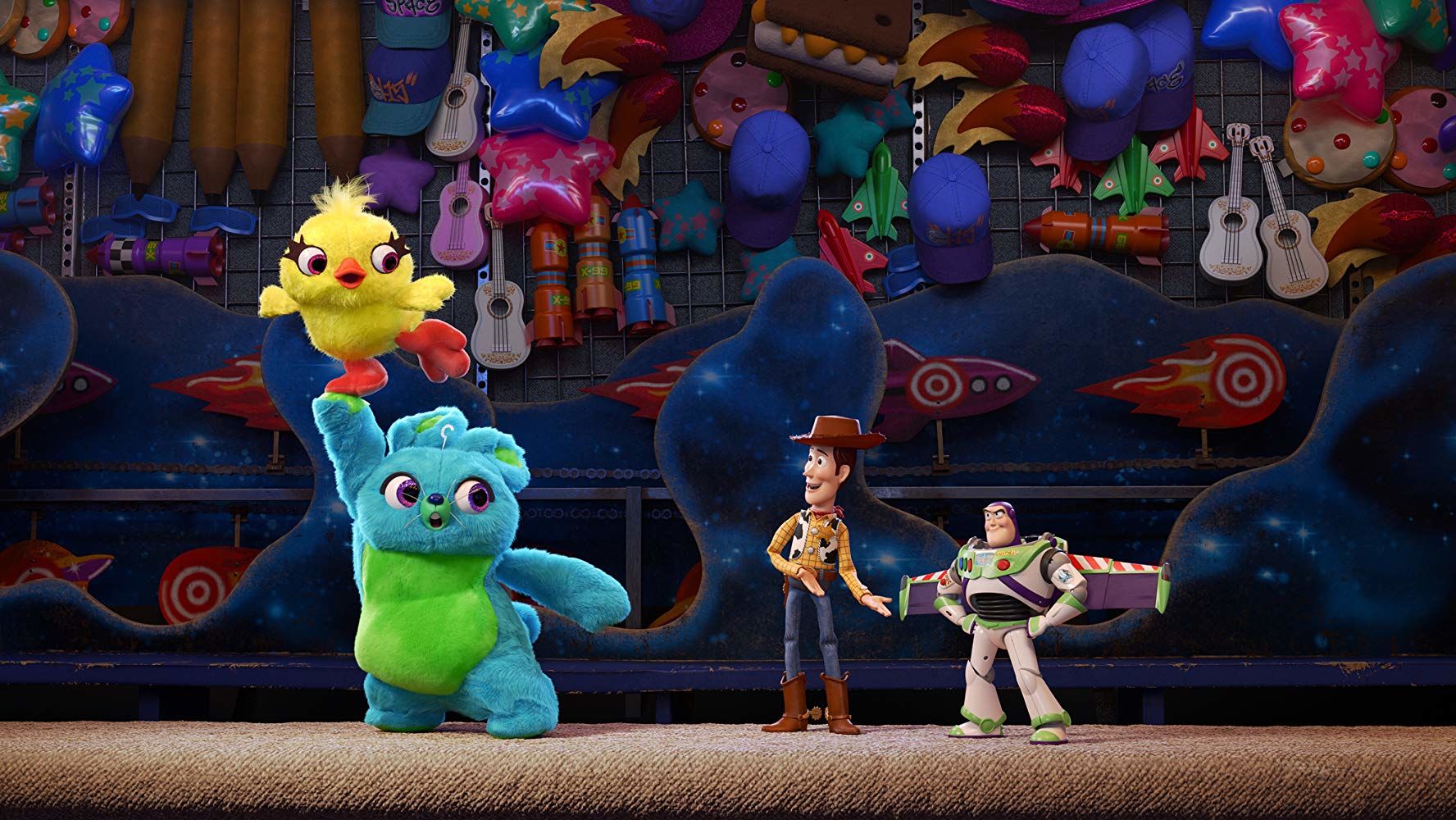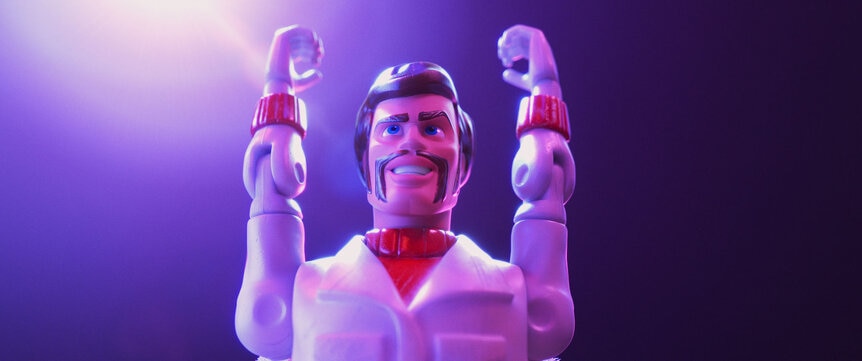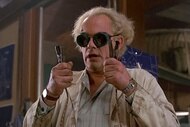Create a free profile to get unlimited access to exclusive videos, sweepstakes, and more!
Why Toy Story 4 added 90s kids toys and experimented with an iPad character

The Toy Story franchise, a series about gracefully accepting the inevitability of age and onset of irrelevance, is now nearly 25 years old — and quietly working to keep up with the times.
When the original Toy Story hit theaters in 1995, it was the product of a team made up almost entirely of men who grew up in the 1960s and early '70s. The groundbreaking animated film focused on a young boy's treasured toy collection, an assortment dominated by classic dolls that recalled the childhoods of the movie's creative team. Sure, Buzz Lightyear was a space ranger action figure that represented the best the mid-'90s had to offer, but he was the shiny new distraction for the more classic toys to compete against — and lacked a grip on reality. Beyond a remote control race car, no other toy required batteries, and though toys such as Mr. Potato Head and green dinosaur dolls were not obsolete, Andy's toy chest tended to be more timeless than timely.
The next two sequels, released in 1999 and 2010, added new toys to the gang, but they were either repeats (Jesse is a pull-string cowboy like Woody) or other very old, common toys (Barbie, Ken, and Lotso, a stuffed purple bear). But for the fourth film in the Toy Story franchise, directed by Josh Cooley and released this summer, changes at Pixar and the inevitable turnover of talent at the studio led to an evolution in the roster of sentient toys.
Toy Story 4 is a road trip movie, with Woody meeting new toys in a number of different settings as he ultimately seeks to reunite with Bo Peep, an old, antique flame. According to producer Mark Nielsen, new toys were also often conceived of as members of the new creative team waxed poetic, with new generations of writers and artists contributing new ideas.
"Josh was a kid growing up in the '80s, while Jonas Rivera and I, the producers, grew up in the '70s, so the toys that we've latched onto were the ones along those lines," Nielsen explains to SYFY WIRE. "Duke Kaboom is a character that's straight out of the '70s childhood that I had and that Jonas had."
Duke Kaboom, a Canadian "daredevil" toy voiced by Keanu Reeves, recalls ambitious stunt performers such as Evel Knievel, though more in ambition than execution. Nielsen remembers receiving plenty of shoddy toys as a kid, fueling Duke's feel-good subplot.
"It's the struggle of living up to your commercial," he explains. "That cracked us up immediately as an idea because anybody growing up in the '70s or '80s, you see these great commercials, and you know the feeling of getting that thing at Christmas or for your birthday and opening it up, and then just being disappointed. Like that's, 'Man, it looked so much cooler when I saw it in the commercial. It doesn't really do that at all.'"
Some toys, meanwhile, were based in nostalgia for around the time the original Toy Story hit theaters.
"We have a story department that had some younger people in it, they grew up in the '90s, so some of the characters that you see on the playground in the movie came out of that," Nielsen says. "For example, there's that one toy with the wings, a fairy that goes up into the air and then spirals down like a helicopter. One of the girls in this story team says, 'I would love to put in one of these,' and she drew it into her storyboards."
Another new toy, Giggle McDimples, is a tiny police officer who was suggested by team members who were slightly older children when Toy Story was first released.
"There are some other women on the story team that grew up in the '80s, and they all had Polly Pockets, and a lot of them still have them," Nielsen explains. "They'd bring their collection from childhood into the story room and we'd be like, 'Oh, there's so much potential. We've never done a tiny toy before. How cool would it be to introduce the smallest toy in the toy universe in this story?' We're always looking to introduce a toy that hasn't been seen in the previous films."
Not every toy was tossed into the movie after a brief period of joyful group reminiscence; Pixar has a story team that works rigorously to ensure every beat and character serves a function in every film. Toy Story 4's most prominent new character is a doll from the mid-20th century who rules an antique store with an iron fist. Gabby Gabby, a pull-string doll from the 1950s, is set up as a foil for Woody, with the same origin — from the same factory, even, Nielsen says — but an entirely different life story.
"We needed a character that was lost in time, that had been there pining for a child for basically their whole life," he says.
Meanwhile, the stuffed carnival toys Ducky and Bunny, voiced by Keegan-Michael Key and Jordan Peele, respectively, were meant to be comedically pathetic, which served to make them a bit antsy and mischievous.
"They live really sad, pathetic existence," Nielsen says. "They're cheaply made. They're basically bait for kids to spend money on and not win."
The Toy Story movies are as much for adults as for children, and when the first one came out, the technology and the construction of toys had changed only incrementally over the past half-century, making it easier for those '50s toys to resonate with audiences of all ages. But now, 25 years later, kids are as likely to use iPhones as LEGOs and plastic green army men, a shift that complicates a movie series based on toys with faces.
"We talked a lot about that, and we had the idea of like, do we introduce a technological toy into all of this?" Nielsen recalls. "We even tried a few things in our story reels along the way. But at the end of the day, it just wasn't that interesting. When you're talking about a screen and a phone or an iPad, we tried a few things, and it just wasn't interesting to watch."
As a father himself, Nielsen looked to his own family for guidance on the matter.
"The way we reconciled that was, 'You know what? Our kids do both. Our kids play with toys, and our kids play with technology,'" he says. "I've got four kids and they'll take the iPad, and they'll make a stop motion film with their toys. So they're actually using technology and their toys together. We're like, 'Let's just explore the creative side of our kids. They build stuff all the time. They're always making things out of stuff.' That's the side of childhood that is so much more interesting to explore and watch than the technology side."
As Pixar plots ahead, the goal is to keep walking that line, avoiding too much technology wherever possible. "If they ever weren't a thing, that would be something the Toy Story films would have to reckon with," Nielsen acknowledges. "But as long as kids have imagination and still play with things and make things, I think we're still going to be playing in a universe that is relevant."
Toy Story 4 is available on download on October 1st and hits Dlu-ray and DVD on October 8th.



























